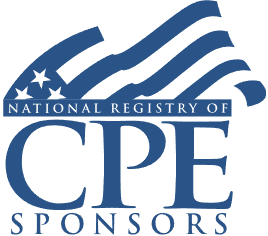F Reorganizations and Other Tax Planning for S Corporation Acquisitions and Investments

Course Details
- smart_display Format
On-Demand
- signal_cellular_alt Difficulty Level
Intermediate
- work Practice Area
Tax Preparer
- event Date
Tuesday, August 13, 2024
- schedule Time
1:00 p.m. ET./10:00 a.m. PT
- timer Program Length
110 minutes
-
BARBRI is a NASBA CPE sponsor and this 110-minute webinar is accredited for 2.0 CPE credits.
-
BARBRI is an IRS-approved continuing education provider offering certified courses for Enrolled Agents (EA) and Tax Return Preparers (RTRP).
This webinar will discuss tax planning for S corporation investments and acquisitions, including the practical uses of F reorganizations in purchasing, selling, and restructuring S corporations. Our panel of taxation experts will walk you through examples and common scenarios, including pre-transaction planning for S corporation investments and acquisitions, the qualified Subchapter S subsidiary election, and comparing F reorganizations with alternative elections under Sections 338(h)(10) and 336(e).
Faculty

Mr. Gilbert concentrates his practice in the area of business tax law. He represents domestic and international clients in a wide range of federal, state, and local tax matters. Mr. Gilbert advises publicly traded and private corporations, partnerships, funds, tax-exempt organizations, and individuals on various matters, including those arising in taxable and tax-free mergers and acquisitions, divestitures, restructurings, spin-offs, redemptions, and liquidations; inbound and outbound investments; formation, operation, and acquisition of limited liability companies, partnerships, and Subchapter S corporations; real estate transactions; financings; and tax controversies. He also has experience advising private equity and hedge fund sponsors on the tax aspects of fund formation as well as representing institutional investors regarding joint ventures and other investments. Mr. Gilbert is admitted to practice in New York and Florida, and is also a certified public accountant in New York. He earned his LL.M. in Taxation from New York University School of Law and his J.D. from the University of Alabama School of Law. Mr. Gilbert also received his M.S. in Accounting from the University of Florida and his B.S. in Accounting and Finance from Florida State University.

Mr. Pasmanik, CPA, MST, a Partner at Hertz Herson, has over 25 years of experience in Federal, International, and State and Local taxation. His background includes roles at Big 4 and National accounting and advisory firms, and he has served both individual and corporate clients, ranging from closely held businesses to public corporations. Mr. Pasmanik specializes in tax planning, structuring, consulting, and compliance issues for medium and large domestic and foreign owned corporations. He has extensive experience in ASC 740, corporate and flow-thru entities, and in structuring inbound and outbound tax structures. Mr. Pasmanik has developed and implemented tax structures utilizing holding companies, blocker entities, and check-the box elections. His expertise also includes controlled foreign corporations, passive foreign investment companies, transfer pricing, earning stripping, foreign derived intangible income deductions, foreign tax credits, interest expense limitations, treaties, and withholding tax matters. Mr. Pasmanik also has extensive experience in representing clients on tax examinations, and multi state and local income tax matters including unitary taxation and voluntary disclosure agreements.
Description
S corporation shareholders will generally prefer the tax treatment afforded to them in a stock sale, whereas buyers will want to structure S corporation acquisitions to achieve a stepped-up tax basis in the S corporation’s assets. To obtain a step-up in the tax basis of the S corporation’s assets, buyers may consider structuring the acquisition as a deemed asset sale by negotiating with sellers to make an election under Sections 338(h)(10) or 336(e). However, such elections impose strict requirements and significant limitations. As an alternative to elections made under Sections 338(h)(10) or 336(e), tax-free reorganizations under Section 368(a)(1)(F) (“F reorganizations”) can also provide a basis step-up to buyers. An F reorganization is defined under Section 368(a)(1)(F) as "a mere change in identity, form, or place of organization of one corporation, however effected." Six requirements must be met under the Treasury regulations to effect these reorganizations. Revenue Ruling 2008-18 and other IRS guidance outlines the sequence of steps that should be followed to ensure the S corporation election remains intact after the F reorganization.
F reorganizations can be used to mitigate against the risk that a target’s S corporation election is invalid or terminated, to facilitate equity rollovers by sellers, and to enable investments from disqualified S corporation shareholders.
Pass-through entities and corporate tax advisers need to comprehend the tax benefits and caveats of F reorganizations.
Listen as our panel of experts explains how to utilize F reorganizations to solve common problems in S corporation investments and acquisitions.
Outline
- S corporations: an introduction
- Considerations for S corporation buyers and investors
- Considerations for S corporation shareholders
- Section 338(h)(10) and Section 336(e) elections
- Common issues with S corporation elections
- F reorganizations: an introduction
- F reorganizations involving S corporations: Revenue Ruling 2008-18
- Benefits and caveats to F reorganizations involving S corporations; comparison to elections under Sections 338(h)(10) and 336(e)
- Considerations for purchase and sale agreements
- State tax considerations
- International tax planning and F reorganizations involving S corporations
- Estate planning and F reorganizations involving S corporations
- Tax Return Reporting and Compliance
Benefits
The panel will cover these and other critical issues:
- Practical uses of F reorganizations for S corporation issues
- F reorganizations compared to elections under Section 338(h)(10) and 336(e) to treat stock purchases as asset purchases
- Structuring an F reorganization to ensure an S election remains intact and the business retains its EIN
- Meeting the six requirements under the Treasury regulations for F reorganizations
- Examples detailing common F reorganization scenarios
NASBA Details
Learning Objectives
After completing this course, you will be able to:
- Identify the six requirements under the Treasury regulations for F reorganizations
- Determine how F reorganizations are used to relocate an entity
- Decide when shareholders could benefit from an F reorganization
- Ascertain differences between F reorganizations and elections under 338(h)(10)
- Field of Study: Taxes
- Level of Knowledge: Intermediate
- Advance Preparation: None
- Teaching Method: Seminar/Lecture
- Delivery Method: Group-Internet (via computer)
- Attendance Monitoring Method: Attendance is monitored electronically via a participant's PIN and through a series of attendance verification prompts displayed throughout the program
- Prerequisite: Three years+ business or public firm experience preparing complex tax forms and schedules, supervising other preparers or accountants. Specific knowledge and understanding of pass-through taxation, including taxation of partnerships, S corporations and their respective partners and shareholders.

Strafford Publications, Inc. is registered with the National Association of State Boards of Accountancy (NASBA) as a sponsor of continuing professional education on the National Registry of CPE Sponsors. State boards of Accountancy have final authority on the acceptance of individual courses for CPE Credits. Complaints regarding registered sponsons may be submitted to NASBA through its website: www.nasbaregistry.org.

Strafford is an IRS-approved continuing education provider offering certified courses for Enrolled Agents (EA) and Tax Return Preparers (RTRP).
Unlimited access to premium CLE courses:
- Annual access
- Available live and on-demand
- Best for attorneys and legal professionals
Unlimited access to premium CPE courses.:
- Annual access
- Available live and on-demand
- Best for CPAs and tax professionals
Unlimited access to premium CLE, CPE, Professional Skills and Practice-Ready courses.:
- Annual access
- Available live and on-demand
- Best for legal, accounting, and tax professionals
Related Courses

Mastering Form 5472: Filing Requirements for Foreign Individuals, LLCs, and Companies
Friday, May 30, 2025
1:00 p.m. ET./10:00 a.m. PT

Charitable Remainder Trusts: Utilizing CRATs and CRUTs to Minimize Income and Transfer Tax, SECURE 2.0 QCDs
Thursday, May 29, 2025
1:00 p.m. ET./10:00 a.m. PT

LLC and Partnership Purchases: Entity Interests vs. Asset Sales, Basis Adjustments, Elections, Tax Reporting
Thursday, May 15, 2025
1:00 PM E.T.
Recommended Resources
How CPE Can Bridge the Gap Between What You Know and What You Need to Know
- Career Advancement